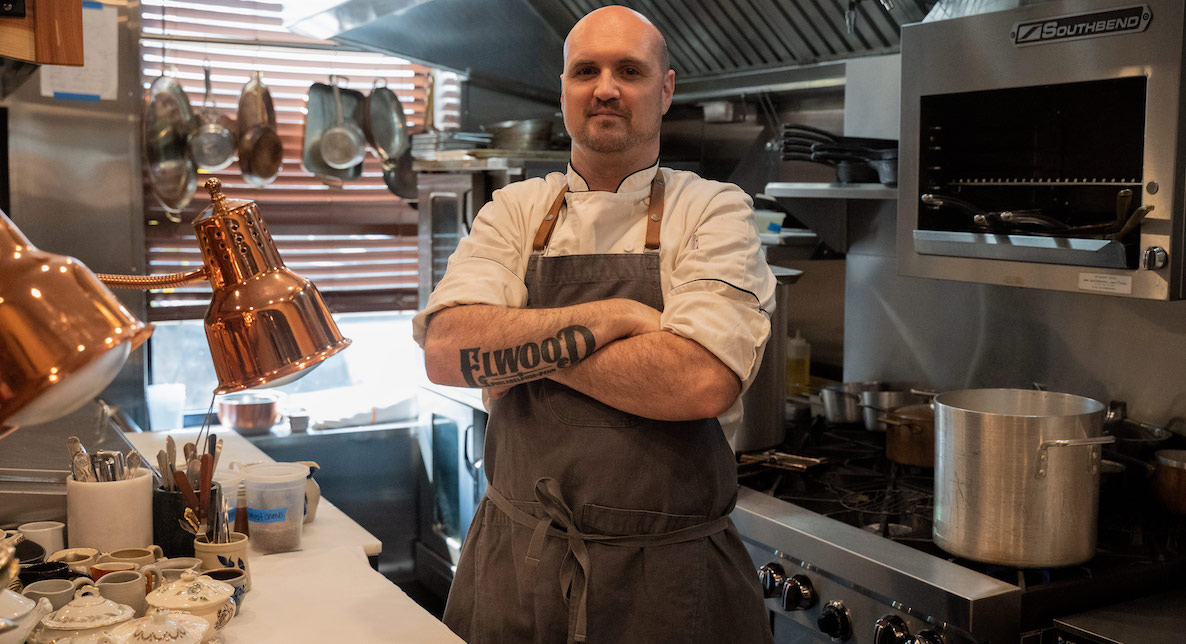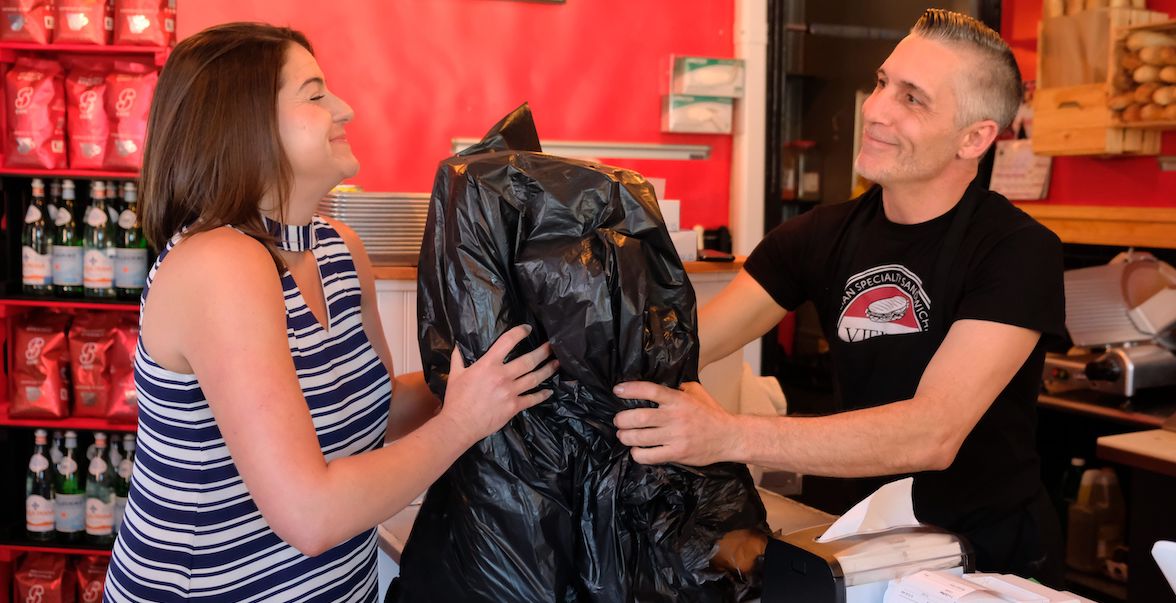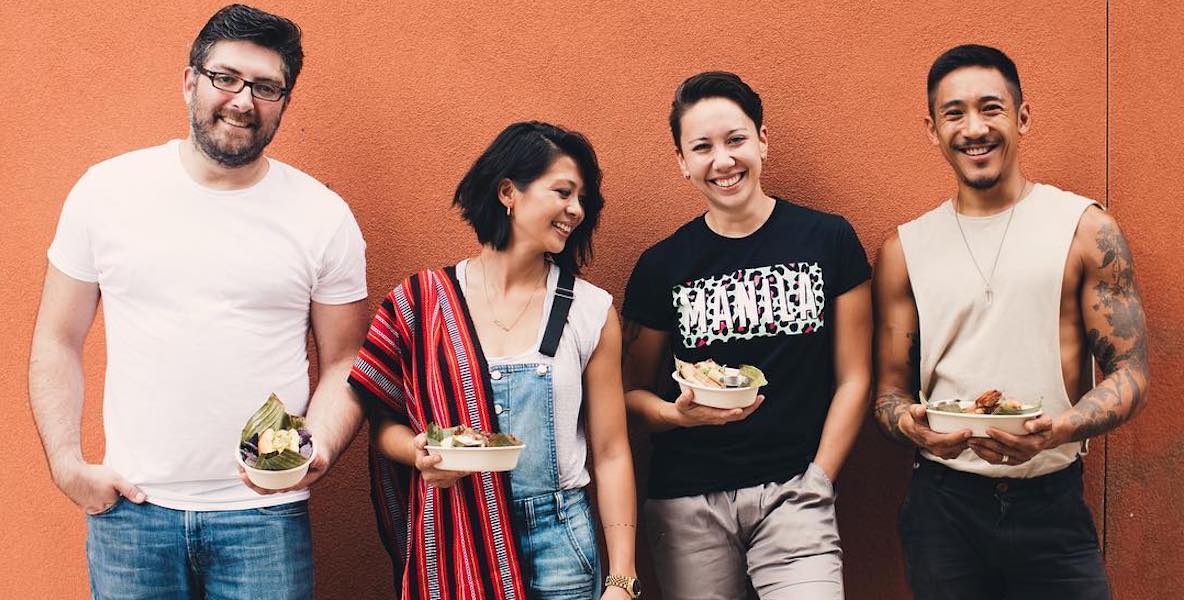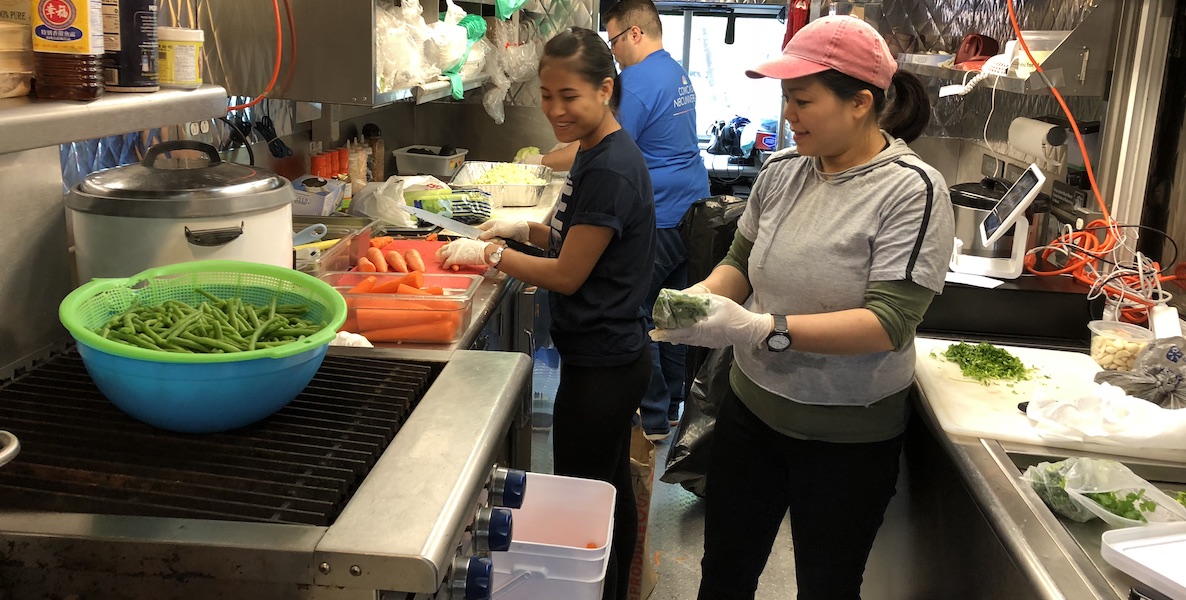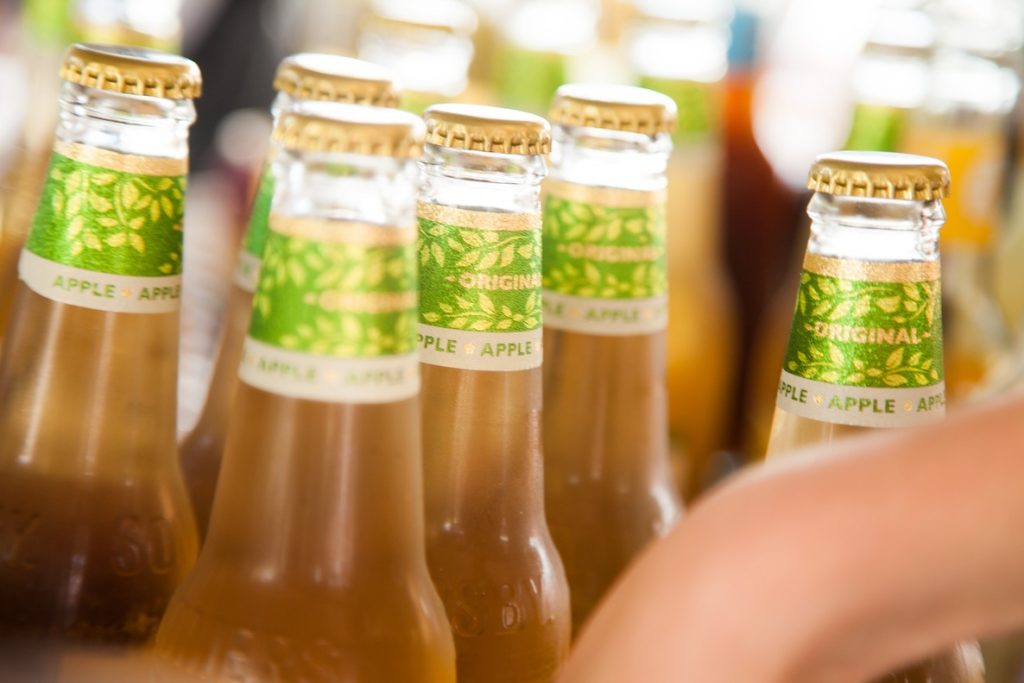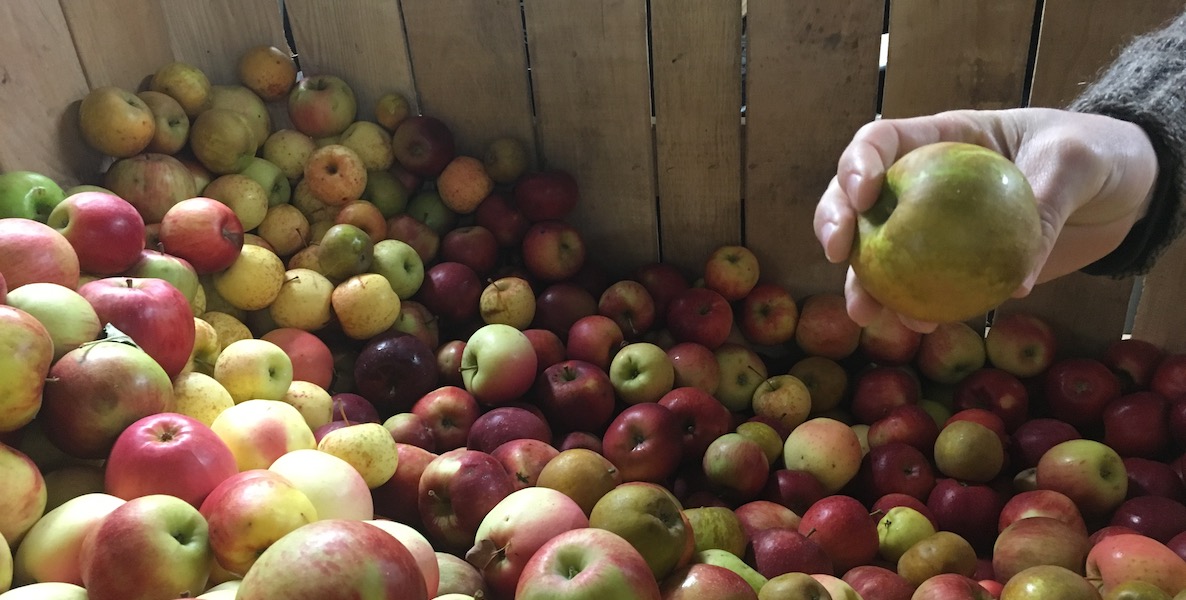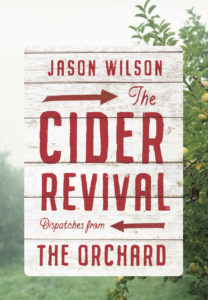 As I write this, I am drinking a cider made by a cult producer in New York’s Catskills region called Aaron Burr Cidery, named after the treasonous vice president who (as you may have heard) shot and killed Alexander Hamilton in a duel. This particular bottling is labeled Sea Apples, and the apples used to make this cider were hand-foraged from wild, uncultivated trees along the shoreline of remote Isle au Haut off the coast of Maine by the cider makers, Andy Brennan and Polly Giragosian. The trees grow so close to the sea that a light film of salt forms on the apples’ skins as they ripen. This bottling was made from fruit harvested during the autumns of 2015 and 2016, and so when I’m drinking it, the cider has a few years of age. It’s funky, elemental, mineral, briny. The ripe, earthy apple aromas suggest a gnarled peel, but there are even more far-flung notes that taste closer to old amontillado sherry. Aaron Burr Cidery made only 21 cases of this cider, and it is difficult to find. I’ve seen it retail at just under $30 for a 500-milliliter bottle, which is smaller than a standard wine bottle. I’ve seen it on a drinks menu at a fancy restaurant in Manhattan for more than $50.
As I write this, I am drinking a cider made by a cult producer in New York’s Catskills region called Aaron Burr Cidery, named after the treasonous vice president who (as you may have heard) shot and killed Alexander Hamilton in a duel. This particular bottling is labeled Sea Apples, and the apples used to make this cider were hand-foraged from wild, uncultivated trees along the shoreline of remote Isle au Haut off the coast of Maine by the cider makers, Andy Brennan and Polly Giragosian. The trees grow so close to the sea that a light film of salt forms on the apples’ skins as they ripen. This bottling was made from fruit harvested during the autumns of 2015 and 2016, and so when I’m drinking it, the cider has a few years of age. It’s funky, elemental, mineral, briny. The ripe, earthy apple aromas suggest a gnarled peel, but there are even more far-flung notes that taste closer to old amontillado sherry. Aaron Burr Cidery made only 21 cases of this cider, and it is difficult to find. I’ve seen it retail at just under $30 for a 500-milliliter bottle, which is smaller than a standard wine bottle. I’ve seen it on a drinks menu at a fancy restaurant in Manhattan for more than $50.

Prefer the audio version of this story? Listen to this article in CitizenCast below:
Audio Player
Suffice to say Aaron Burr Cidery’s Sea Apples is about as far from that one, solitary mass-market cider your local craft beer bar probably keeps on tap. If you’re like a lot of people, you drank that one cider once, and found it sugary, cloying, one-note, and something to avoid. You may have never drank cider again. This is sad, because that’s like drinking a glass of Yellow Tail or a cheap boxed wine or maybe even a Bartles & Jaymes wine cooler, and then deciding that all wine—white or red, sparkling or rosé, Old World or New World, grand cru or gluggable—sucks.
If you’re like a lot of people, you drank that one cider once, and found it sugary, cloying, one-note, and something to avoid. You may have never drank cider again. This is sad, because that’s like drinking a glass of Yellow Tail or a cheap boxed wine or maybe even a Bartles & Jaymes wine cooler, and then deciding that all wine sucks.
These days, in my wine fridge, I have dozens of excellent ciders. They crowd out much of the space that, until recently, was reserved for my favorite wines. I have bubbly ciders and still ciders, tannic ciders and acidic ciders, bone-dry ciders and off-dry ciders, ciders made of American heirloom apples, English bittersharp and bittersweet apples, Spanish apples, French apples, and wild crab apples. Most of these ciders come in 750-milliliter bottles, the standard-sized bottle for wine. Some are made in the same traditional method as Champagne. Others use apples that are macerated with their skins before pressing to achieve an effect similar to red wine. There are bottlings made from a single apple variety, such as 100 percent Northern Spy or Kingston Black or Geneva Tremlett, labeled just like pinot noir or chardonnay or cabernet sauvignon. I even have single-orchard and single-tree bottlings.
Most of the ciders are blends of colorfully named apple varieties: Newtown Pippin, Roxbury Russet, Brown Snout, Golden Russet, Harry Masters Jersey, Ashmead’s Kernel, Esopus Spitzenburg, Ellis Bitter, Bulmers Norman, Wickson Crab, Zabergau Reinette—just to name but a few of the hundreds of unfamiliar apples with which one can make cider. Beyond those hundreds are thousands more unnamed varieties growing wild throughout North America, to be discovered by foragers like those at Aaron Burr Cidery. There are about 1,400 known wine grapes in the world— a fraction of the 7,500 apple varieties known to be cultivated. In the US alone there are more than 2,500 identified apple varieties in existence. There have been more than 16,000 varieties cultivated at one time or another in North America, though most of them are now extinct.
All of this may come as a surprise to drinkers who have only experienced cider through the prism of craft beer, consuming it from that one, sad, lonely tap handle at the bar. But you don’t “brew” cider. Cider is essentially apple wine, made with fruit grown in an orchard in the same way wine comes from grapes grown in a vineyard. And like wine, cider can only be made once a year, after the fall harvest. Cider makers even use a version of the truism (or well-worn cliché) that winemakers always repeat: Cider making begins in the orchard. This wine-like approach to cider has recently taken hold so fully that what evolved was a new species of drinks person termed a pommelier, an expert on cider, akin to the sommelier.
Where to find delicious cider in PhillyGet to Drinking!
It’s not that I didn’t enjoy cider. I secretly loved the good stuff, particularly the complex, dry kind. My skepticism came from my work, covering the world of alcoholic beverages. Cider, within this arena, has always been viewed as a second-class tipple. I’ve written columns on cocktails, spirits, wine, and beer for newspapers and magazines for more than a decade, and only on a few rare occasions had I been permitted by an editor to slip a good word about cider into the mix. I was always trying to advocate for the ciders that I loved, from northern Spain or Normandy or a fine New England producer such as New Hampshire’s Farnum Hill. But something was always getting lost in the translation. One of my columns suggested cider as an alternative to wine at Thanksgiving. I still stand solidly by that advice, though I’m pretty sure most readers had not sipped “cider” with their turkey since moving on from the sweet sparkling Martinelli’s juice they drank at the kiddie table. For another, even less successful article, I pitched cider as a summer, low-cal alternative to those awful Skinny Margaritas everyone was drinking in the late aughts. You get the picture: Cider always had to be positioned as an alternative to everything else.
Throughout my career, I’ve turned people on to all manner of obscure and off-the-beaten-path drinks—from bitter amaro to strange liqueurs to weird wines made from grapes they can’t pronounce from regions they couldn’t find on a map. But cider always seemed a bridge too far, a place many simply would not follow. In my personal life, I could feel friends and family wince or glance at one another skeptically, bracing themselves, whenever I opened a cider for them.
Dear reader, what I’m trying to say is this: I am now on my way to becoming a Certified Pommelier. God help me. This is my story.
The problem was that most people thought of cider as something that existed in a drinks netherworld, that strange sphere where “malternatives” or “alcopops” like Zima, Mike’s Hard Lemonade, Twisted Tea, Four Loko, and Smirnoff Ice lurked, a bad crowd up to no good. Cider was something consumed by your gluten-free ex-girlfriend, or that weird ponytailed dude who still played Magic: The Gathering, or perhaps out of a jug by some woodsman in Vermont wearing a flannel shirt and a long beard. In fact, it was during my college days in Vermont when I first started seeing so-called “hard” ciders like Woodchuck and Cider Jack pop up next to the IPAs, hefeweizens, and oatmeal stouts.
The biggest issue for cider may be that, for many people, I often still have to clarify that I’m talking about “hard cider” to distinguish it from the apple juice you buy in plastic containers at the farmers market or sugary Mott’s or the sparkling Martinelli’s of childhood. Instead, that stuff should be called “soft cider” to differentiate, because the non-alcoholic stuff you drank as a kid is the fake thing. I actually hate when people call cider “hard cider.” After all, there is no “hard wine.” Wine is to grape juice what cider is to apple juice. Cider is cider—for hundreds of years it’s been an alcoholic beverage made from apples and other fruit.
Yes, you’ll quickly find that I have strong feelings on cider. That’s because somewhere along the journey of my life, I stopped hiding my love of this beverage. A few years ago, all logic be damned, I dove headfirst into the world of cider. Perhaps the bar is low, but at this point I have become—dare I say it—a cider expert. No, probably “expert” is too grand. I don’t make cider, and I do not grow apples. No, instead, let’s say that I have become a knowledgeable aficionado, an educator, and maybe even a critic. I even passed an exam given by the United States Association of Cider Makers, which bestowed upon me the title of Certified Cider Professional. Dear reader, what I’m trying to say is this: I am now on my way to becoming a Certified Pommelier. God help me. This is my story.

The first pommelier I ever met was Dan Pucci, a short guy with dark curly hair and beard who is soft-spoken and usually dressed in a typical white-guy button-down shirt with sleeves rolled up. This unassuming nature, however, hides a radical fanaticism. Once you get Pucci talking about cider, his blue eyes grow intense and his mouth can barely keep up with the thoughts and ideas spilling out. Pucci becomes a cider evangelist speaking in tongues.
“Cider’s issues moving forward are all about expectations and norms,” he’d say, as he poured a single-varietal cider from Herefordshire, England, with a pungent whiff of the cow pasture, or a Basque cider vaguely redolent of balsamic vinegar and berries, or a fleshy, full-bodied, tannic cider called Lost Orchard, made from rare and “feral” apples gathered in Sonoma County by Tilted Shed. “Cider is in a dynamic place right now. People are discovering and rediscovering things. But cider’s big challenge moving forward is all about identity. For example, we’re not sure if we want to be like beer or wine. We’re still figuring shit out in the cider community.”
I met Pucci when he worked as cider director of a bar on the Lower East Side of Manhattan called Wassail. Sometimes, I find it hard to believe that Wassail existed at all. It’s as if the place were conjured from some cider’s geek’s imagination: an all-cider bar with a vegetarian menu on Orchard Street that took its name from a medieval English Christmastime drinking ritual meant to wake up the apple trees, scare away evil spirits, and ensure next year’s bountiful harvest. At Wassail, you would eat dishes made with foraged mushrooms, organic squash, and pickled root vegetables, and concoctions like a salad of cucumber and melon, with macadamia nuts and sorrel leaves, dressed in borage seed oil. Mostly importantly, Pucci had curated a list of more than 100 ciders, from all over the world: Normandy and Brittany in France, Asturias in northern Spain, Somerset in the UK, apflewein from Germany, and elsewhere. More than 20 of them were poured by the glass, and some bottles at the higher end topped $60.
Attend the book launch party at Hale & TrueDo Something
When the place opened in 2015, critics didn’t seem to know what to make of it. “Hanging out at Wassail is like going to a planet populated by nitrogen-based life-forms; everything is at once recognizable and thoroughly different,” wrote dining critic Pete Wells, in his review for the New York Times. “The proper response,” wrote Eater critic Robert Sietsema, “is bewilderment.” But even in their bewilderment, they generally gave the place favorable reviews.
Finally, it seemed, cider was having its fashionable turn in the bright pop-cultural lights. “Hard cider is having its craft beer moment,” declared Bon Appétit in its January 2016 issue. Sales of regional and local craft cider were up 30 percent in 2017, following a 40 percent jump in 2016. The growth was palpable. In 2011 there were 187 registered cideries in the nation. By 2018, there were 820. In 2011, a little less than 5 million people identified themselves as “regular cider drinkers.” Only four years later, in 2015, more than 18 million people identified themselves as such. Cider would become a billion-dollar business in 2017. “There’s no reason apples shouldn’t earn the same respect as grapes,” said the drinks site PUNCH in 2016, upon declaring, “Cider is undeniably having a moment in America.”
The contemporary rediscovery of artisan cider, and the apples to make it, was a sincere attempt to glean the knowledge of an earlier, pre-Prohibition era. It also felt like a chance to revisit a version of rural America that wasn’t some dubious, pernicious myth put forth by a red-hatted, orange-faced liar and meant to divide the country.
While the ciders at Wassail from around the world were wonderful and fascinating, the largest part of the list was given over to American ciders. And while there were a few great ciders from the Pacific Northwest, such as Art + Science in Oregon or Snowdrift in Washington, the most essential part of the menu was for ciders from New England and the rest of the northeastern United States. Invariably, my favorite ciders that Pucci poured were from New York or Vermont or New Hampshire, made with rediscovered, historic cider-apple varieties. As someone who’s lived my entire life in the Northeast, including formative years in New England, I felt a deep connection to these beverages. That, to me, felt like the most eye-opening thing about cider. This was more than a “moment” or a passing fad. This was a revival of something that had once been the most important drink in America.
Like me, Pucci had spent many years deep in the wine bubble. He’d trained as a sommelier and sold Italian wine at Eataly and Otto, Mario Batali’s casual enoteca. Like me, he was fluent in obscure grape varieties and little-known regions. But he’d grown disenchanted with Italian wine. He grew sick of what he called “fetishizing far-off places” and the “mythology of wine.” And so he left wine behind, threw himself into cider, and became a pommelier. One thing that drew Pucci to cider, and keeps him going, is the idea that American cider hails from less exotic origins, places like the Catskills or the Green Mountains, or the Berkshires. As the wine critic Jon Bonné wrote in his own profile on Pucci (which also announced “cider’s moment”): “You drink wine from Gigondas or Santorini and you’re supposedly transported—while cider exudes a sort of comfort in its near-ness.”
Cider comes from places where your relatives possibly live or might be the hometown of a friend or where you once went to summer camp or drove through on a family car trip. Or at least you’ve maybe picked fruit at a U-Pick orchard, or bobbed for apples at Halloween, or eaten a candied one on a stick. “I think people, at least here, understand apples in a way that we don’t understand grapes,” Pucci said.
Foodizen articles by Jason WilsonRead More
Then, just as I was about to publish my first article on the American cider revival, suddenly and without warning, at the height of what was supposed to be cider’s moment—I learned that Wassail might be closing its doors on Orchard Street. At first, there were rumors and speculation. Then, Pucci left to start a restaurant consultancy and begin work on an encyclopedic tome about cider. Finally, a few months later, Wassail was shuttered. No reason was given. It’s as if the place simply disappeared back into whatever other dimension, whatever alternative reality, it had come from.
But by that point, I was in too deep. I felt like someone had to keep talking about the cider revival, and I figured it would be me.
Jason Wilson is The Citizen’s 2019 Jeremy Nowak Fellow, funded by Spring Point Partners, in honor of our late chairman Jeremy Nowak. He is the author of three books, including Godforsaken Grapes, series editor of The Best American Travel Writing, and writes for the Washington Post, New York Times, New Yorker and many other publications. The Cider Revival will be published on September 3. Order it here.
Photo courtesy Jason Wilson


